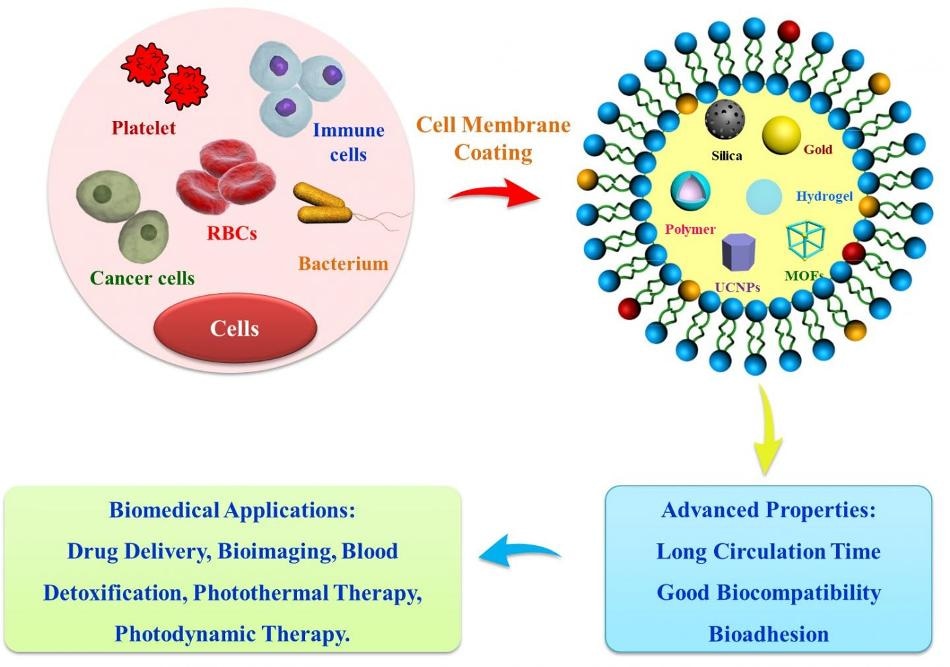May 15 2019
Surface engineering of nanocarriers dedicates significant contribution to the area of biomedicine, ranging from drug delivery to theranostic.
 Cell membrane-coatings as biomaterials make the better surface engineering of nanocarriers and apply for biomedical applications. (Image credit: Science China Press)
Cell membrane-coatings as biomaterials make the better surface engineering of nanocarriers and apply for biomedical applications. (Image credit: Science China Press)
Traditional physical/chemical methods have the tendency to use morphological control, PEG functionalization, and lipid modification, which enable nanocarriers to be involved in a range of tasks in complex biological conditions. While these traditional approaches enhanced the in-vivo performance of nanocarriers, they still encounter drug delivery barrier caused by immune clearance, leading to a low therapy efficacy.
Moreover, the biomedical applications of synthetic components of nanocarriers are restricted by their undesirable biocompatibility and biotoxicity. It is of high importance to create biomimetic nanocarriers for the existing drug delivery systems.
Recently, growing interest encourages coating cell membranes on the surface of nanocarriers as a potential approach to help manage these problems. Cell membranes separated from red blood cells are taken as the coating materials on the surface of nanocarriers. This new biomimetic hybrid system integrates synthetic materials and naturally biological components, which revolutionizes the conventional concept of nanocarrier. Nanocarriers directly inherit biological constituents of the cell membrane (lipids, antigens, and proteins) to successfully accomplish the immune-evasion and extend the circulation time in the blood stream.
To take up functional diversity, some other cells, like immune cells, platelets, cancer cells, and bacterium, offer their membranes to envelop nanocarriers for versatile properties, such as target recognition, bioadhesion, or deep tissue penetration. In comparison with synthetic carriers, cell membrane-covered nanocarriers apparently enhance their biocompatibility and gain significant efficiency to carry out bioimaging, drug delivery, detoxification, and phototherapy. These aforementioned advantages denote that cell membranes-based delivery systems will play a key role in the next-generation nanomedicine with broad medical applications.
Prof. Junbai Li at Beijing National Laboratory for Molecular Sciences, CAS Key Lab of Colloid, Interface and Chemical Thermodynamics, Institute of Chemistry, Chinese Academy of Sciences, leads an expertise biomaterial group that creates a range of cell membrane-camouflaged nanocarriers for cancer therapy, ranging from drug delivery through photothermal therapy to photodynamic therapy.
In a recent review article reported in National Science Review, Prof. Junbai Li’s team assesses recent advancement of cell membranes-covered nanoparticles from biomaterials viewpoint, and exhibit their unique benefits and underline pertinent biomedical applications. The emergence of this review will help investigators of interdisciplinary science to gain insight into cell membrane coating materials, and further endorse the development in this area.